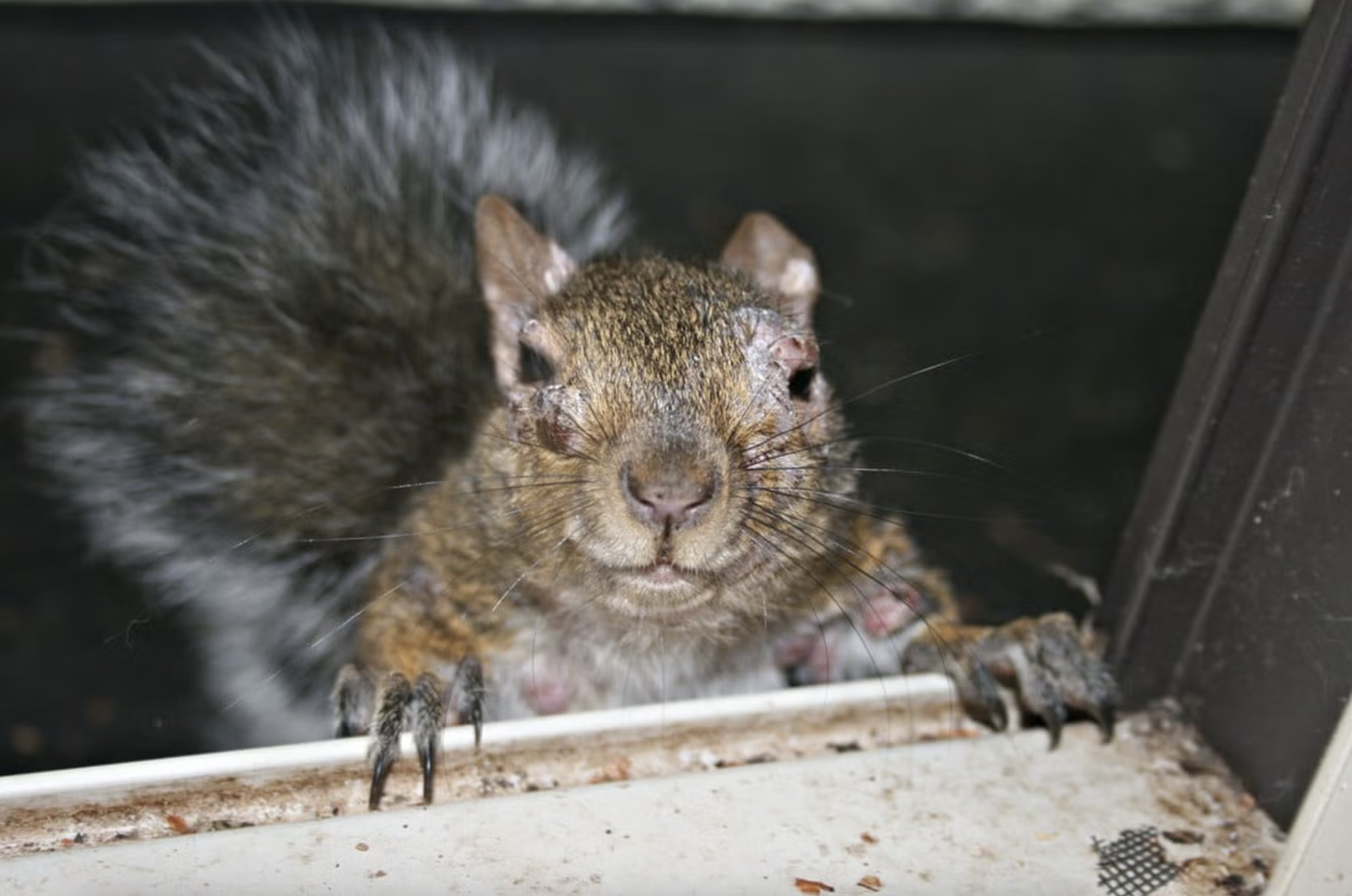Residents in US states like Maine, and parts of Canada, have been posting images and videos of squirrels with unusual growths on social media platforms like Reddit and X.
These images depict gray squirrels with patches of missing fur, weeping sores, and numerous pus-filled, wart-like tumors on their heads and limbs. This phenomenon has been observed since mid-2023, but reports have surged this summer.
One Reddit user shared their experience on 31/7 after spotting a gray squirrel with a growth on its mouth. "I thought it was eating something at first, but then realized the growth was on its face," they said.
Wildlife experts say these animals likely have squirrel fibromatosis, a skin disease caused by the leporipoxvirus. The virus spreads through direct contact between infected and healthy squirrels via open wounds or saliva. Despite their alarming appearance, the squirrels often recover. However, in severe cases, the tumors can spread internally and prove fatal.
 |
Squirrels with pus-filled, wart-like tumors. Photo: Wild Things Sanctuary NY |
Squirrels with pus-filled, wart-like tumors. Photo: Wild Things Sanctuary NY
Shevenell Webb from the Maine Department of Inland Fisheries and Wildlife reassured the public, stating that these squirrels pose no threat to humans, pets, or birds.
However, bird feeders can inadvertently contribute to the spread of the disease. Infected animals can leave the virus on the food, exposing other squirrels to the pathogen.
"Unfortunately, you could be unintentionally attracting numerous squirrels to a feeder and increasing the risk of infection if one is sick," Webb warned.
Experts advise against attempting to capture or interfere with these animals. Webb emphasized that this is a naturally occurring disease and the growths typically disappear within 4-8 weeks.
Previously, the increasing appearance of wild rabbits with unusual antler-like growths on their heads in Colorado parks shocked the American public, with images of these "demon rabbits" circulating widely on social media.
According to the Colorado Parks and Wildlife (CPW), these rabbits are infected with the Shope papillomavirus (CRPV). This virus causes benign tumors on wild rabbits, primarily on their faces, which gradually develop into strange shapes resembling horns or tentacles.












